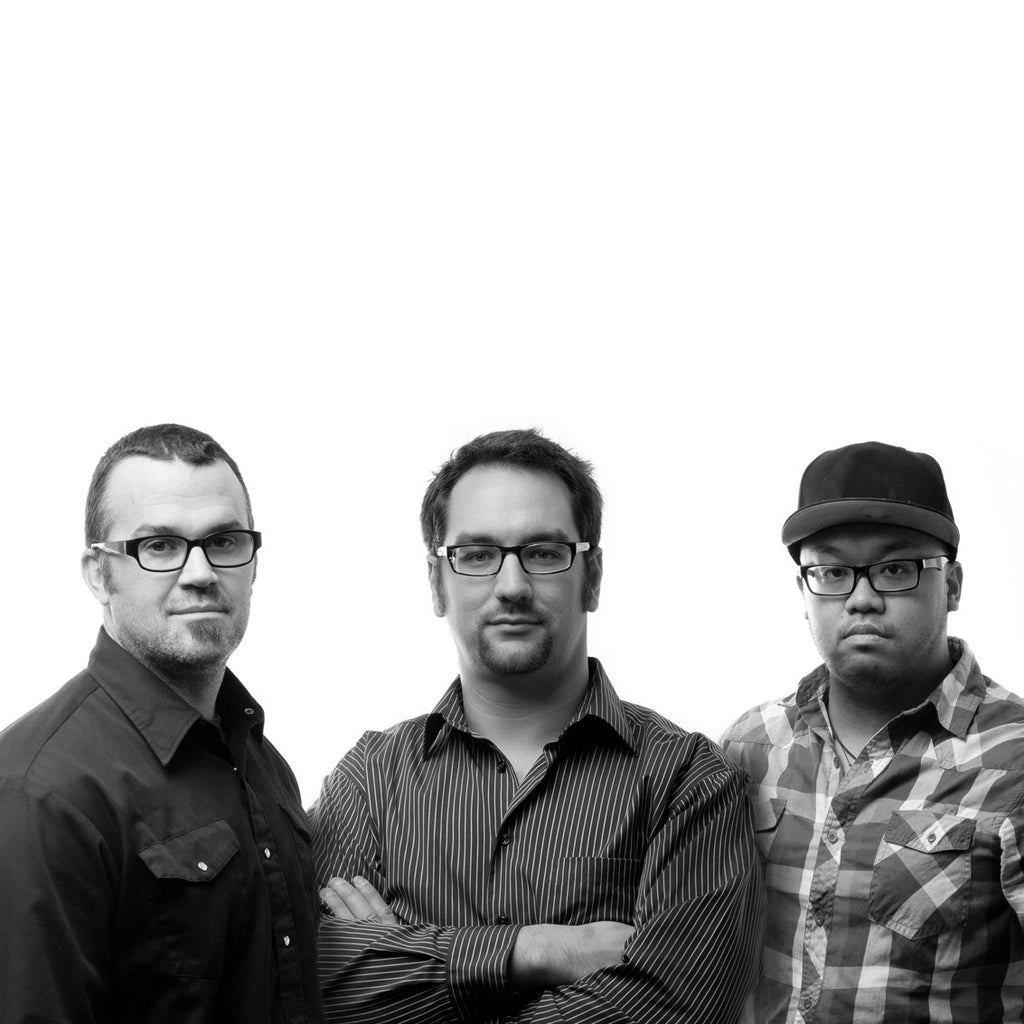
Palette Industries
Nathan Tremblay, Ian Campana, and Samuel Ho founded Palette Industries, an industrial design firm located in Calgary, in 2005. The group’s design philosophy is that everything they create should be a blend of artistic ingenuity, craftsmanship, and engineering.
The three designers have known each other for a long time and obviously work well together. Nathan says, “You get to an understanding of each others’ skills, mindset, our strengths. What we bring to the table is innate. It’s just who we are.”
Lessons learned
One of the things they love about their work is what they learn in developing each product, because that knowledge can applied to future projects. Ian says, “From the kind of material and the manufacturing process, you learn how to do it right, how to do it wrong. And it might shape things a little bit differently.”
“Processes, technologies, trends —
it’s always evolving and if you stop,
you’re done.”
Nathan agrees, and notes that those lessons can be a source of inspiration, but for them, inspiration comes from anywhere and everywhere. “It’s life, it’s a movie, it’s a problem to solve. There’s something in that idea, whatever it is, there’s a quality in that idea, and you just take it and make something of it.”
In their industry, the need to keep progressing is important, now more than ever. And Palette understands that. As Ian says, “Processes, technologies, trends — it’s always evolving and if you stop, you’re done. You’ve got to build on it every day.”
Balancing acts
Palette has struck the right balance between the conceptual and practical. Ian points out that while they don’t restrict themselves by asking how something can be made, “the reality is you’re going to have to make it someday. So we always start with a big idea and trickle it down to, for example, how do we make this ceramic cup? Then you realize things like the wall is too thick or this draft angle needs to be different so that the cups nests, and there are all these elements you need to incorporate. But you don’t know that until you get there.”
Storytelling is a big part of their work, and narratives — sometimes literal, sometimes figurative — are often woven into their designs. Samuel believes a product works if you have a philosophy, a story. “If it’s just an empty object, you can usually tell. But if there’s something more to it, if you can see that someone put something into it, there’s more value in it. You know what’s a designed object and what’s been created for the sake of sales.”